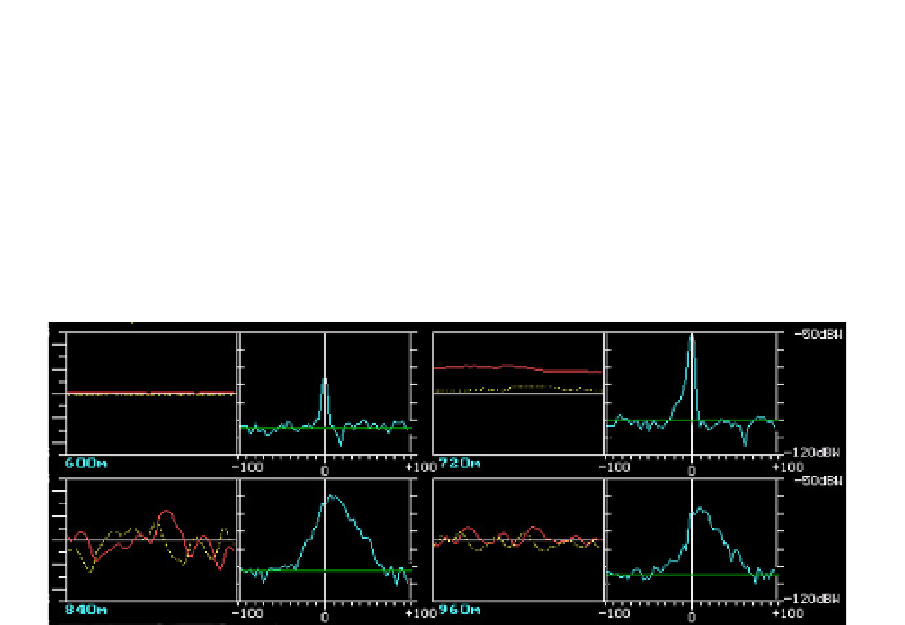Geoscience Reference
In-Depth Information
velocities. In figure 9, for instance, ejecta emitted below the 840 m range bin do not reach the
600 m range bin, falling ejecta reaching the 720 m and 960 m bins where the negative parts
of the spectra look alike. The absolute inclination angle cannot be retrieved directly firstly
because velocities and power distribution vary strongly between explosions and also only
the inclination angular component in the beam's vertical plane can be retrieved. Gerst et al.
(2008) solved this problem by using simultaneously 3 FM-CW radars to calculate the
directivity of Strombolian eruptions and reconstruct time series of the 3-D directivity vector
every second. Another solution is to best match the power spectral distribution in the
different range gates (e.g., Fig. 9) from ballistic models and Mie scattering theory (Gouhier &
Donnadieu, 2010).
Fig. 9. Doppler spectra recorded in 4 range bins during lava jet activity at Etna. For each gate
the raw signals (left) and spectra (right) seen in real-time are shown. The spatial distribution
of the power spectral density in the 840 m range gate above the eruptive crater and in
contiguous range gates (720 and 960 m) gives information about the dynamics of the lava
jets (Laghetto cone, 29/07/2001).
5.2 Information from spectral moments
5.2.1 Mean diameter
Dubosclard et al. (2004) have shown that, in the case of Strombolian activity, the negative
power spectral density (when aiming upward) of the range gates above the vent is mostly
associated with falling particles. Therefore, the mean negative radial velocity weighted by
the power spectral density has been used to retrieve the average particle diameter in the jet,
commonly found to be between 1 and a few cm in diameter. Importantly, Gouhier &
Donnadieu (2008) pointed out that the radar-equivalent mean diameter retrieved from
Doppler spectra differs significantly from the true mode of the particle size distribution
which, indeed, corresponds to the most frequent diameter encountered. Thus the radar-
equivalent mean diameter cannot be used directly as the true modal diameter. In the gas
thrust region of volcanic jets, the power spectrum is very wide, unlike in radar meteorology,
and the physical interpretation of the radar-equivalent mean diameter is complex. Because
the offset factor depends upon the reflectivity at a given radar wavelength, itself dependent
on the number and diameter of particles which vary over a wide range, the conversion
requires the Mie scattering formulation.

